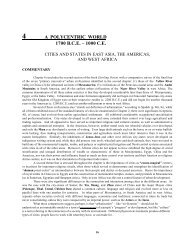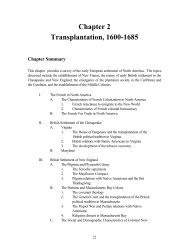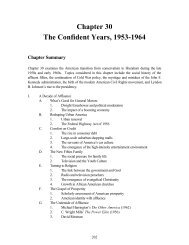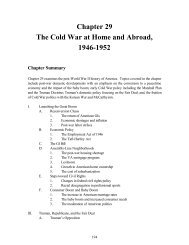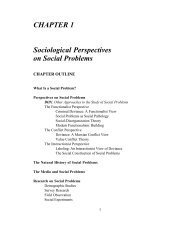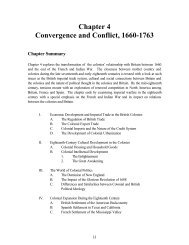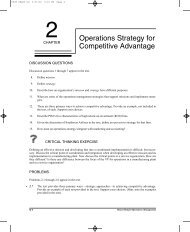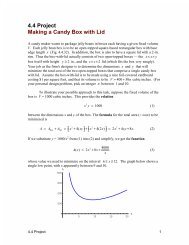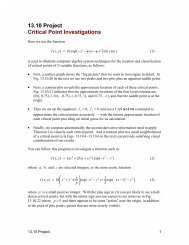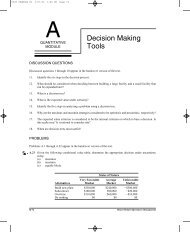14.6 Project Archimedes' Floating Paraboloid
14.6 Project Archimedes' Floating Paraboloid
14.6 Project Archimedes' Floating Paraboloid
Create successful ePaper yourself
Turn your PDF publications into a flip-book with our unique Google optimized e-Paper software.
Thus our oblique segment of a paraboloid has volume 81π/32 and centroid (0, 1 /2, 7 /4).<br />
<strong>Archimedes'</strong> Way<br />
First we examine he elliptical top base of the segment. Looking at the figure above, we<br />
see that the endpoints of the ellipse's major axis are<br />
P1 := [0,-1,1]:<br />
P2 := [0,2,4]:<br />
Hence the center point of the ellipse is<br />
M := (P1 + P2)/2:<br />
Its major semiaxis<br />
has length<br />
MP2 := P2 - M:<br />
with(linalg):<br />
R := sqrt( dotprod(MP2,MP2) ):<br />
The endpoints Q1 and Q2 of the minor axis have the same y- and z-coordinates<br />
yq := M[2]:<br />
zq := M[3]:<br />
as M, and x-coordinates determined by<br />
Hence<br />
xq := sqrt(zq - yq^2):<br />
Q1 := [-xq,yq,zq]:<br />
Q2 := [xq,yq,zq]:<br />
so the ellipse has minor semiaxis<br />
with length<br />
MQ2 := Q2 - M:<br />
r := sqrt( dotprod(MQ2,MQ2) ):<br />
Therefore, the area of the elliptical top base of the segment is<br />
<strong>14.6</strong> <strong>Project</strong> 7



